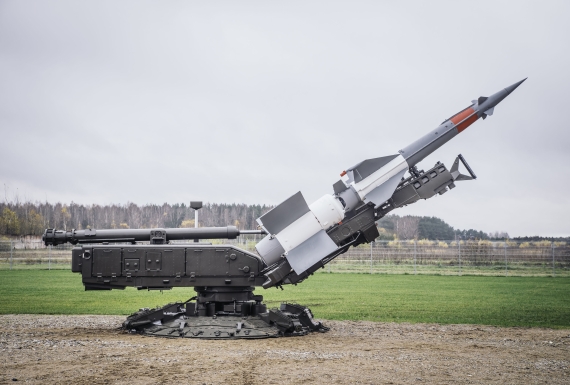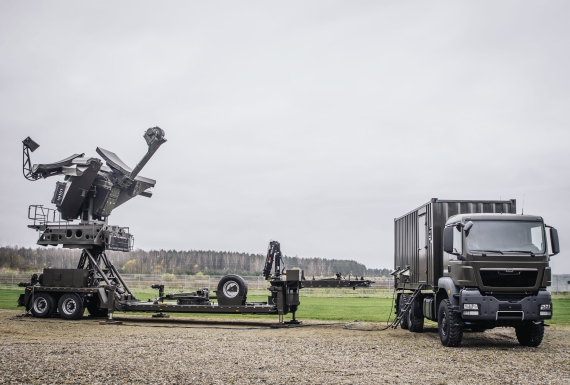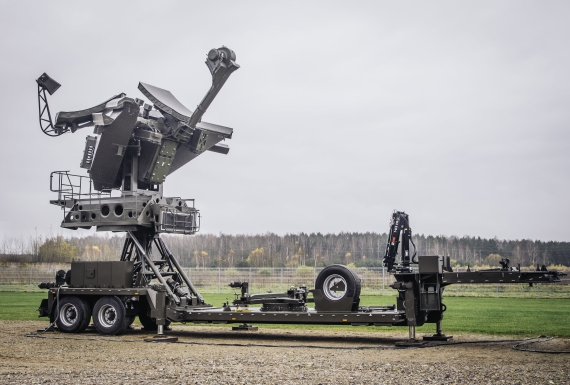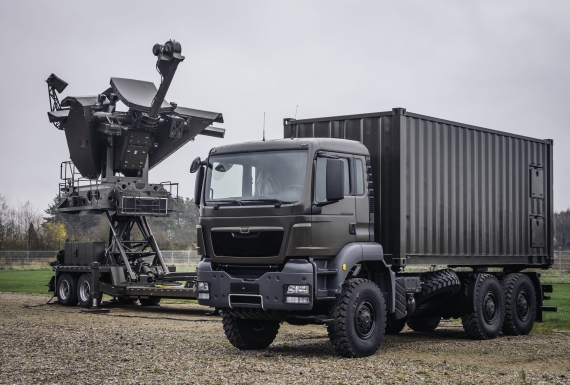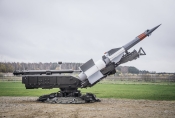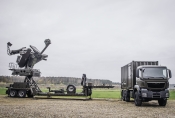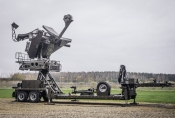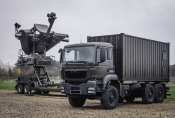SAM system S-125-ML (Pechora-ML)
- Home
- SAM Systems
- SAM system S-125-ML (Pechora-ML)
Upgraded Surface-to-Air-Missile (SAM) system S-125-ML “Pechora-ML” can be used for protecting political and administrative centres, strategic civil and military sites, friendly forces against various means of enemy air attacks. Older systems like Pechora, Neva, SA-3 Goa, etc. can be upgraded.
Composition:
- missile guidance radar SNR-125-ML (consists of UNV-ML antenna post and UNK-ML control cabin);
- SM-RB-125-ML missile battery (consists of four launchers 5P73-ML);
- autonomous power supply system SAES-ML;
- set of power cables KS-ML;
- set of control cables KU-ML;
- spare parts, tools and accessories kit.
S-125-ML may additionally include:
- Capability to detect and destroy low-flying targets, cruise missiles, including very low observable (VLO) (“stealth”);
- Improved jamming resistance to all kind of active and passive jamming, clutter due to application of new technologies, jamming resistance and signal processing techniques;
- Automation of:
- control from superior command post;
- acquisition and processing of surveillance data;
- detection and tracking of targets;
- selection of optimal model for particular missile launch conditions;
- missile preparation and launching;
- monitoring of technical status and operability of system components;
- recording of all data on operation of the ADMS major elements;
- crew training.
- expansion of kill envelope, enhancement of target kill probability in conditions of passive interference and intensive jamming due to introduction of new missile guidance method, optimized radar processing techniques, increased detection and tracking range;
- capability of fully automatic target optical tracking;
- reduced response time and firing cycle;
- extended service life – up to 15 years;
- improved reliability and MTBF (1500 hours) due to new component base;
- GPS-based automatic topographic reference and alignment of system components at site of operation;
- advanced techniques for voice transmission;
- digital data exchange between system components, superior command post and other consumers;
- interfacing capability with a wide range of surveillance sensors and control systems;
- evaluation of combat results due to recording and processing of all data on system operation;
- crew training capability by simulating air situation of any type and friendly actions;
- reduced number of system components. Standardized, modular configuration of equipment;
- notably simplified maintenance of system;
- reduced power consumption;
- improved ergonomics.
|
Parameter |
Before upgrade |
After upgrade |
|
Channel capacity, target/missile |
1/2 |
1/2 |
|
Maximum detection range (tactical fighter): |
|
|
|
39 km |
46 km |
|
28 km |
34 km |
|
23 km |
28 km |
|
Engagement range (tactical fighter): |
|
|
|
30.5 km |
37 km |
|
22.5 km |
27 km |
|
21 km |
25 km |
|
Maximum speed of engaged targets: |
|
|
|
700 m/s |
800 m/s |
|
300 m/s |
300 m/s |
|
Range of detection and stable tracking of targets with RCS of 0.1 m2: |
|
|
|
15 – 17 km |
19 – 21 km |
|
9 – 12 km |
11 – 15 km |
|
Parameters of engagement envelope: |
|
|
|
0.02 km |
0.02 km |
|
18 km |
21 km |
|
3.5 km |
3.5 km |
|
17 km |
27 km |
|
25 km |
34 km |
|
16 km |
24 km |
|
Single-shot kill probability of a target (Pk): |
|
|
|
0.45 - 9 |
0.7 – 0.98 |
|
0.04 – 0.48 |
0.35 – 0.85 |
|
SAM guidance methods: |
|
|
|
yes |
modified |
|
yes |
modified |
|
- |
yes |
|
Target channel auto-tracking modes: |
|
|
|
yes |
yes |
|
- |
yes |
|
- |
option |
|
Protection from jamming: |
|
|
|
up to 30 dB |
up to 40 dB |
|
- |
yes |
|
- |
yes |
|
- |
yes |
|
Time to acquire target |
10 – 15 s |
2.5 – 3 s |
|
Interfacing with IFF |
“Parol-4” system |
option (type chosen by customer) |
|
Simultaneously interfaced launchers |
up to 4 |
up to 4 |
|
Power supply: |
|
|
|
More than 100 kW |
Not more than 45 kW |
|
- |
yes |
|
yes |
- |
|
Autonomous power supply: |
|
|
|
yes |
yes (with standby) |
|
- |
yes |
|
- |
yes |
|
Automatic technical monitoring |
- |
yes |
|
Number of maintenance operations |
454 |
47 |
|
Deploy/stow time at site of operation: |
|
|
|
2 h 10 min |
35 min |
|
- |
10 min |
|
Number of cables used |
103 |
24 |
|
Cross-country ability |
|
not worse than prototype |
|
MTBF |
not less than 45 h |
not less than 1500 h |
|
Target acquisition from radars with digital output |
- |
Yes (up to 4) |
|
Direct automated control from command post |
- |
yes |
|
Built-in radios for data and voice transmission |
- |
option |
|
Built-in GPS |
- |
yes |
|
Recording of all operations |
- |
yes |
|
Automatic recording of technical data |
- |
yes |
|
Built-in planning and integrated training mode (on simulated targets against real ground and air situation) |
- |
yes |
